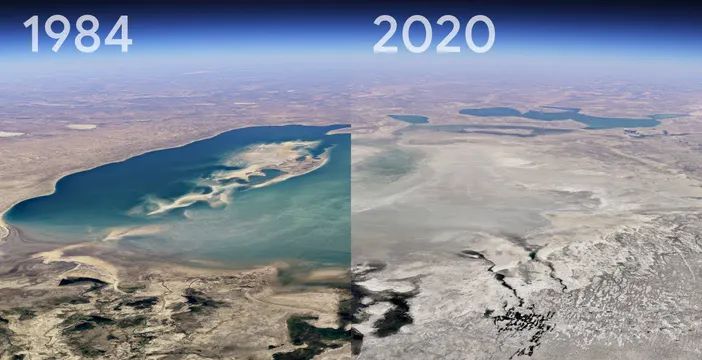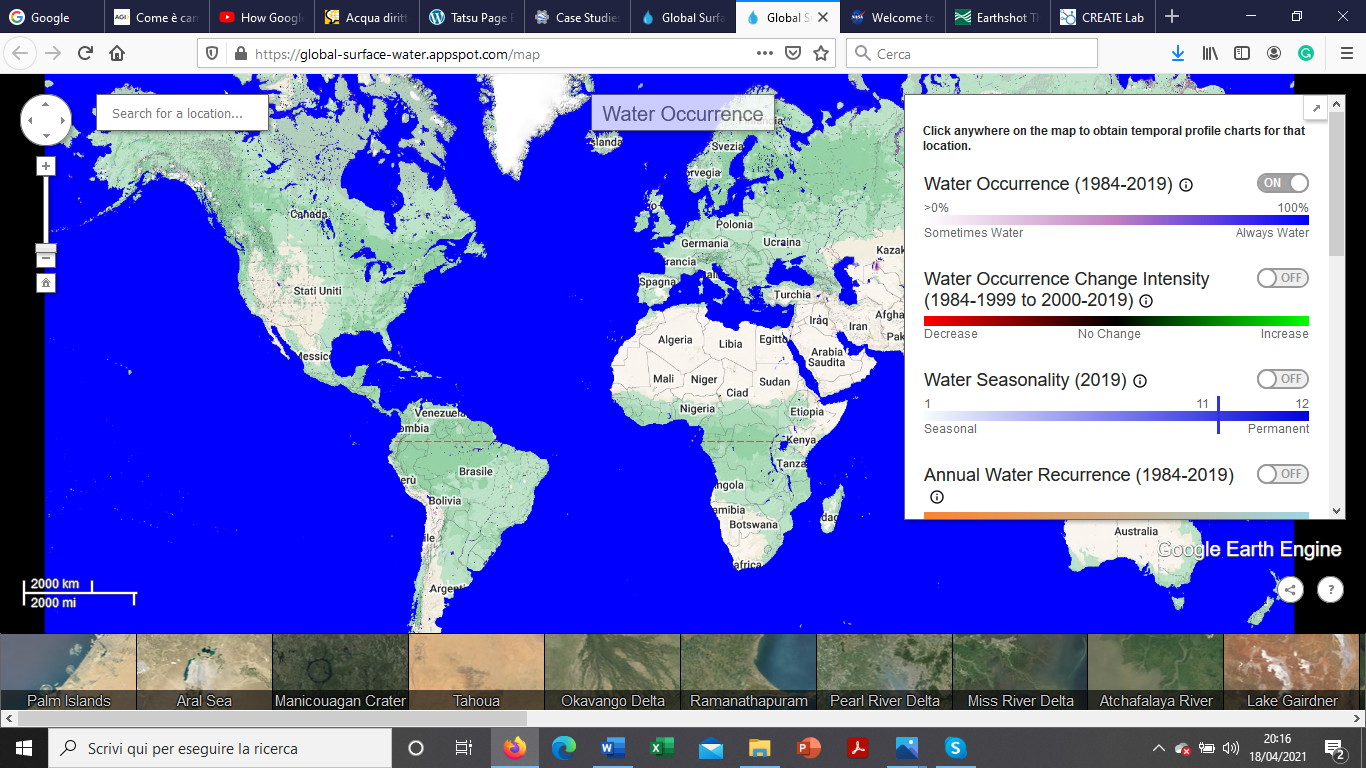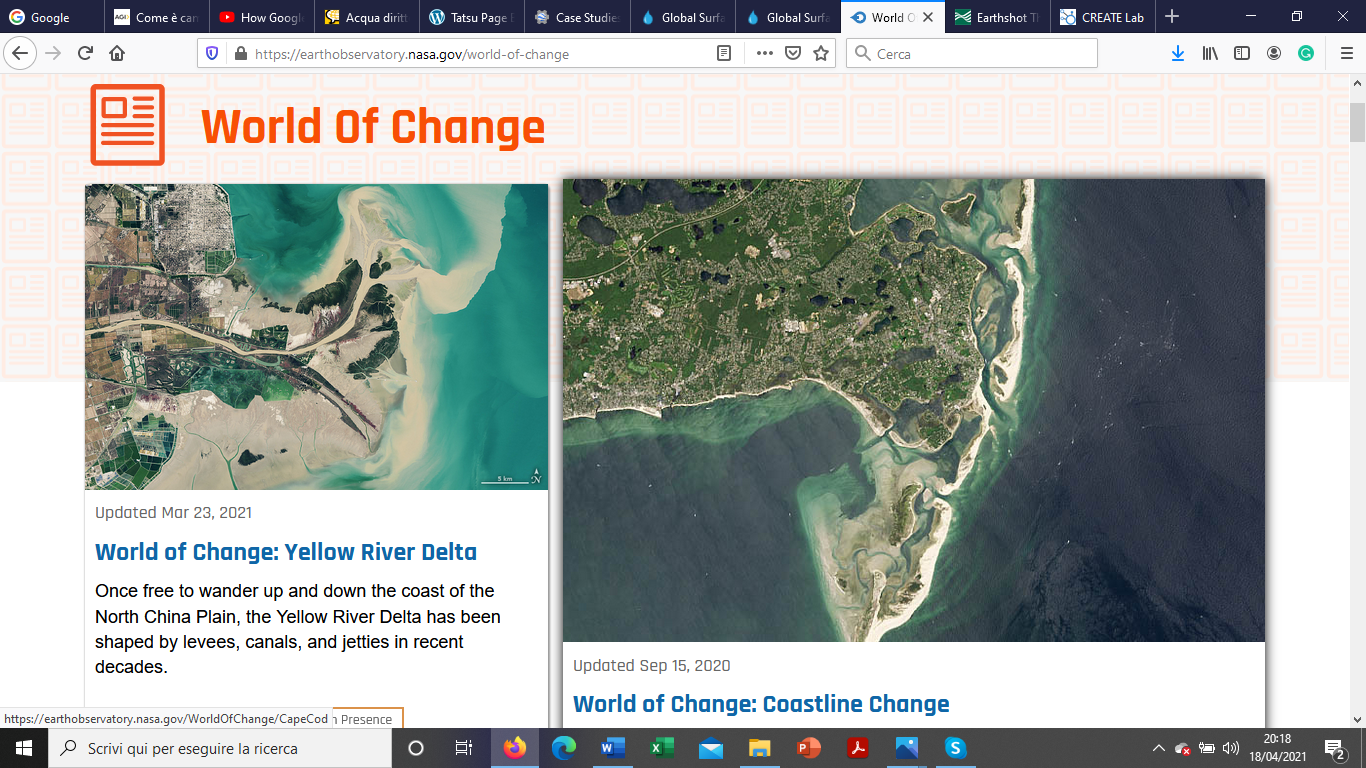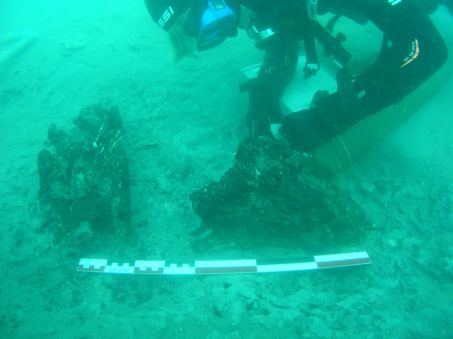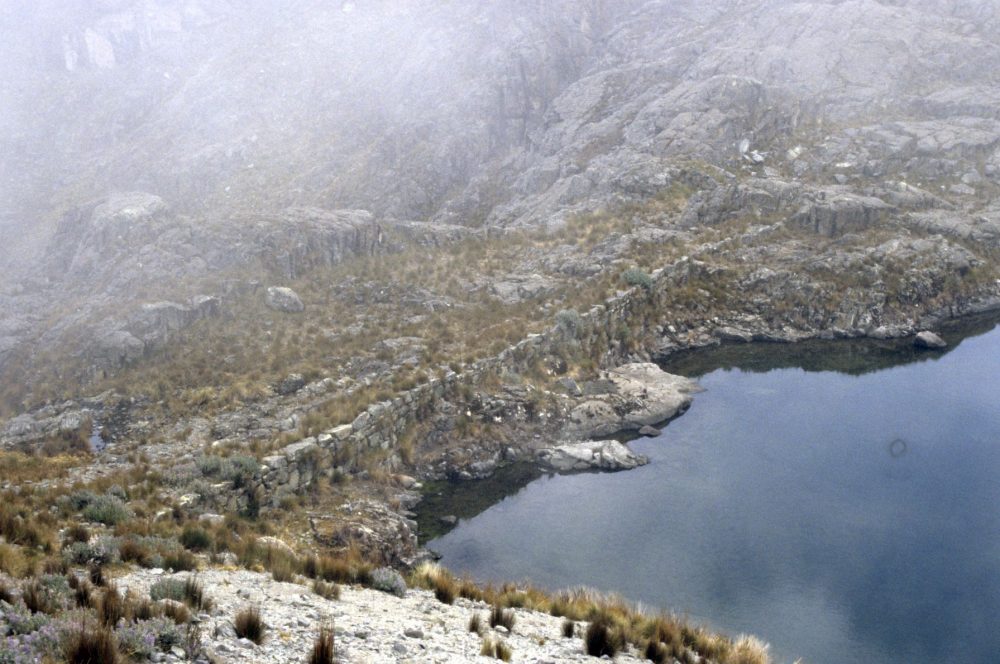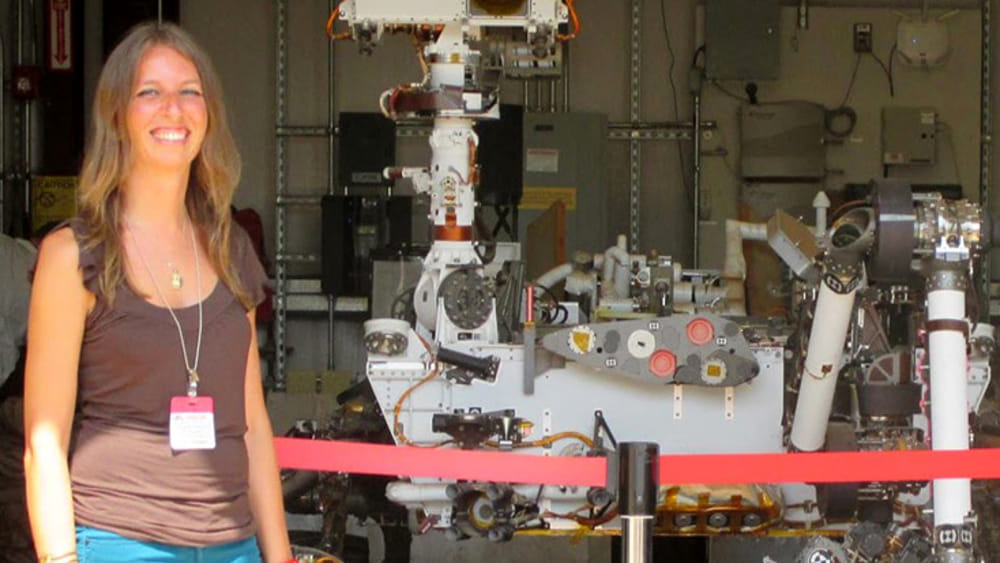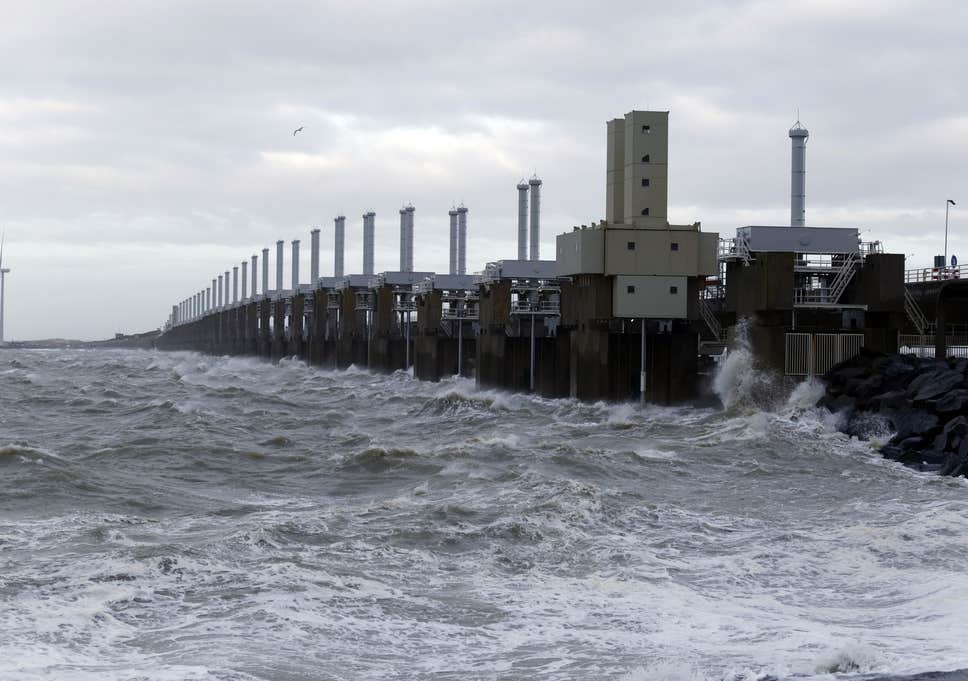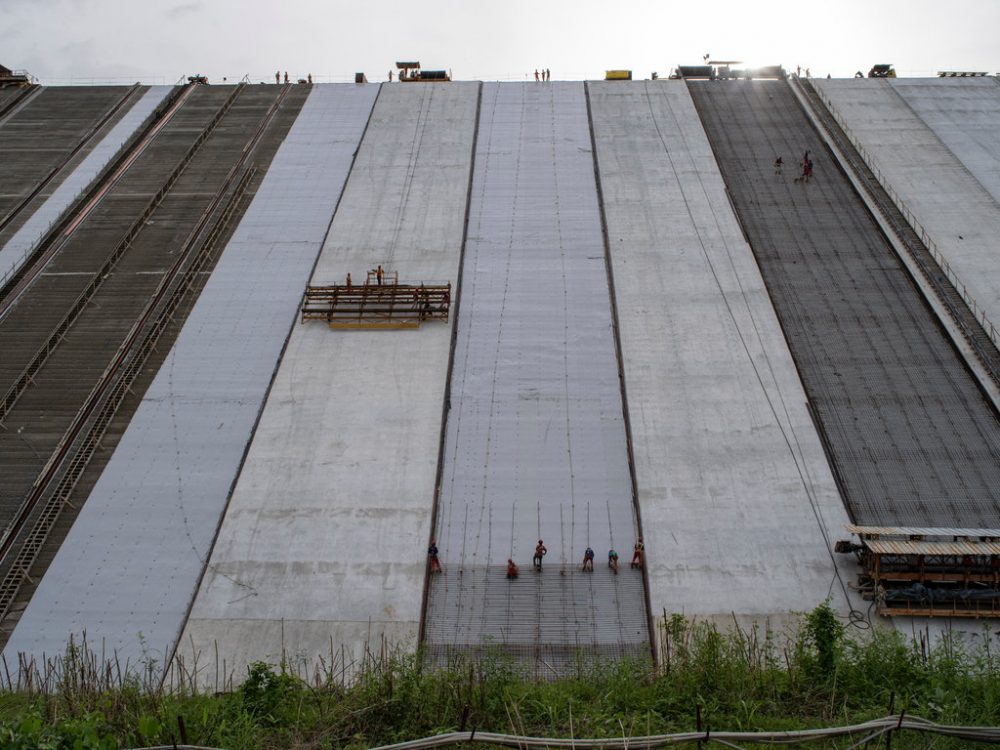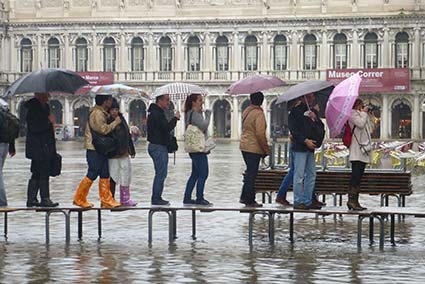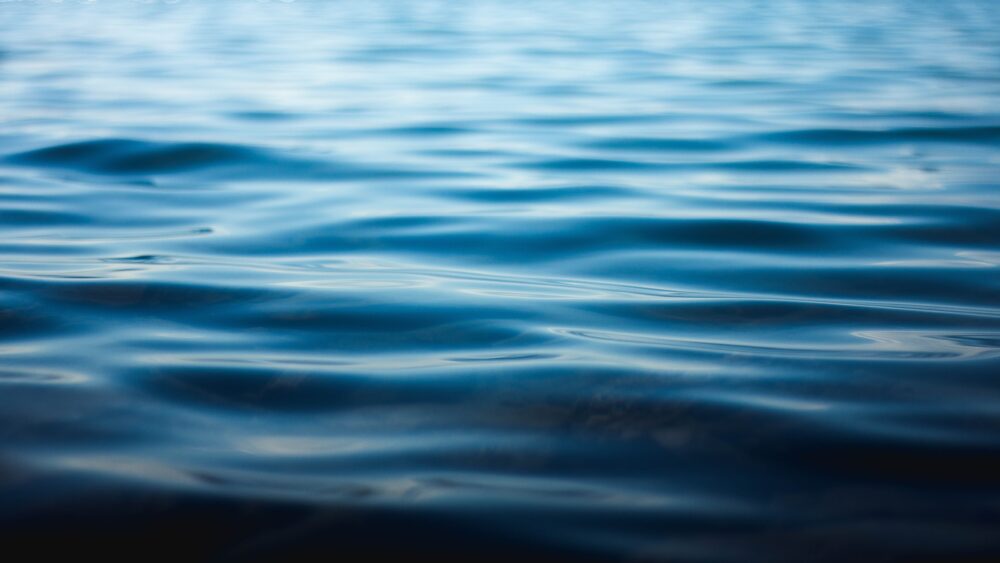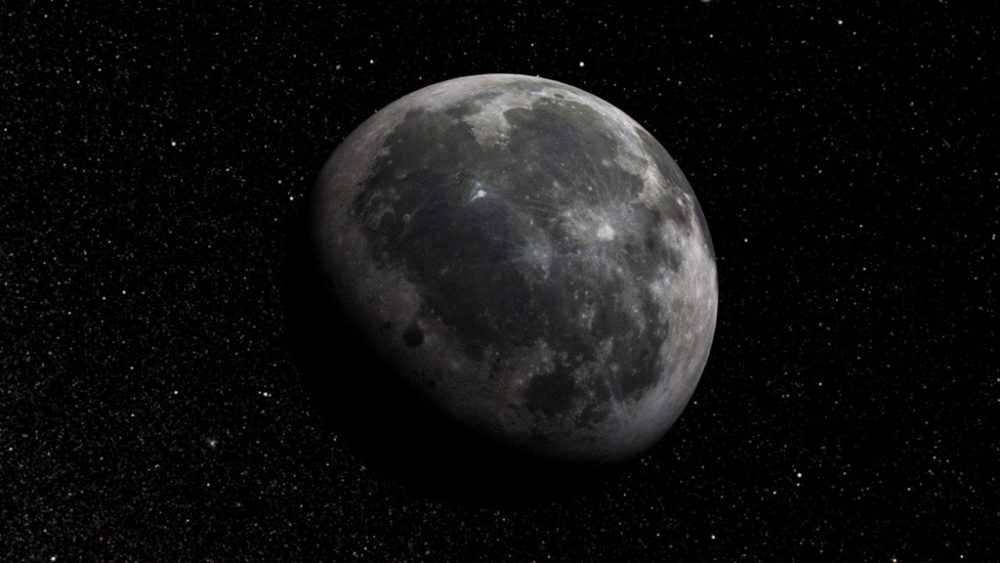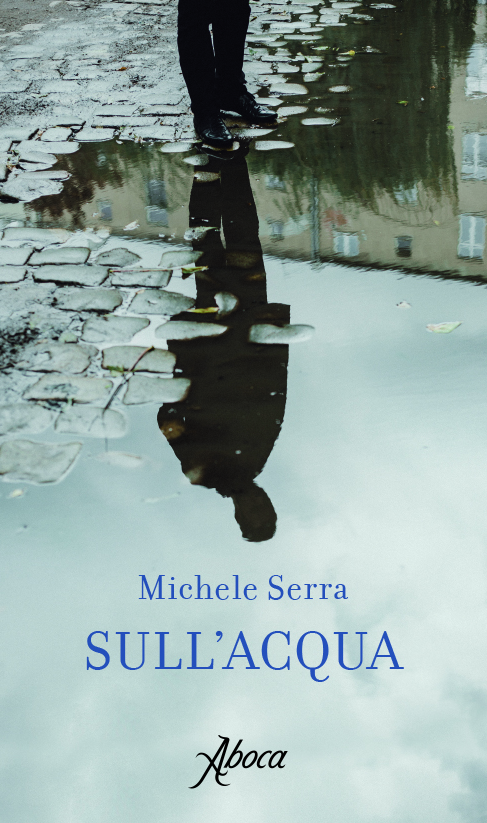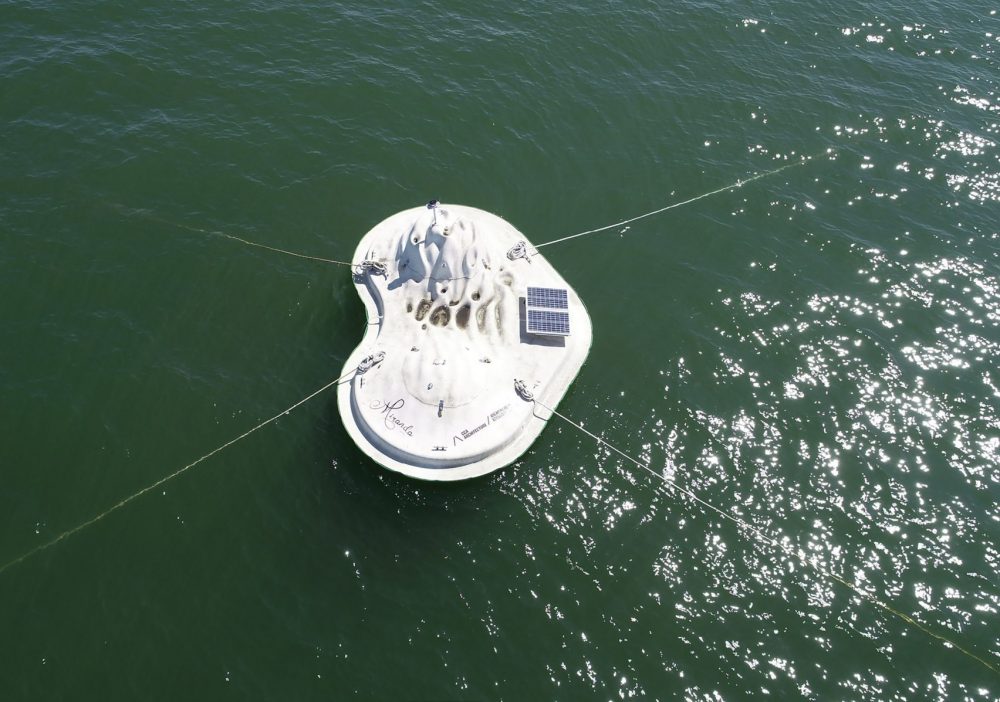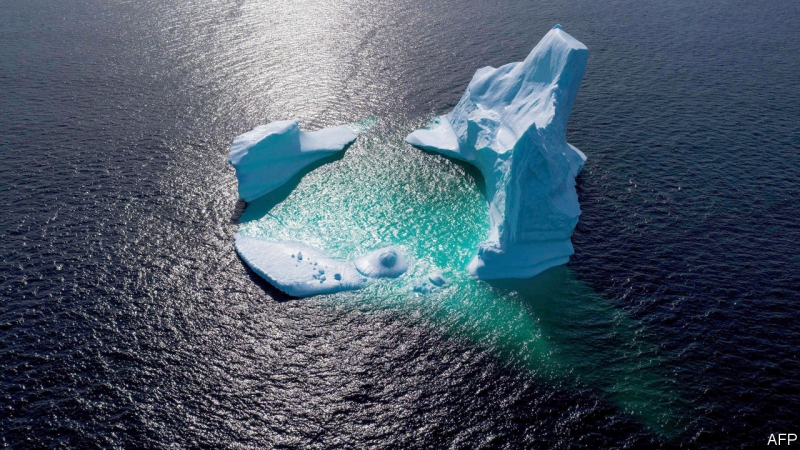Le parole (estreme) dell’acqua — The (extreme) words of water
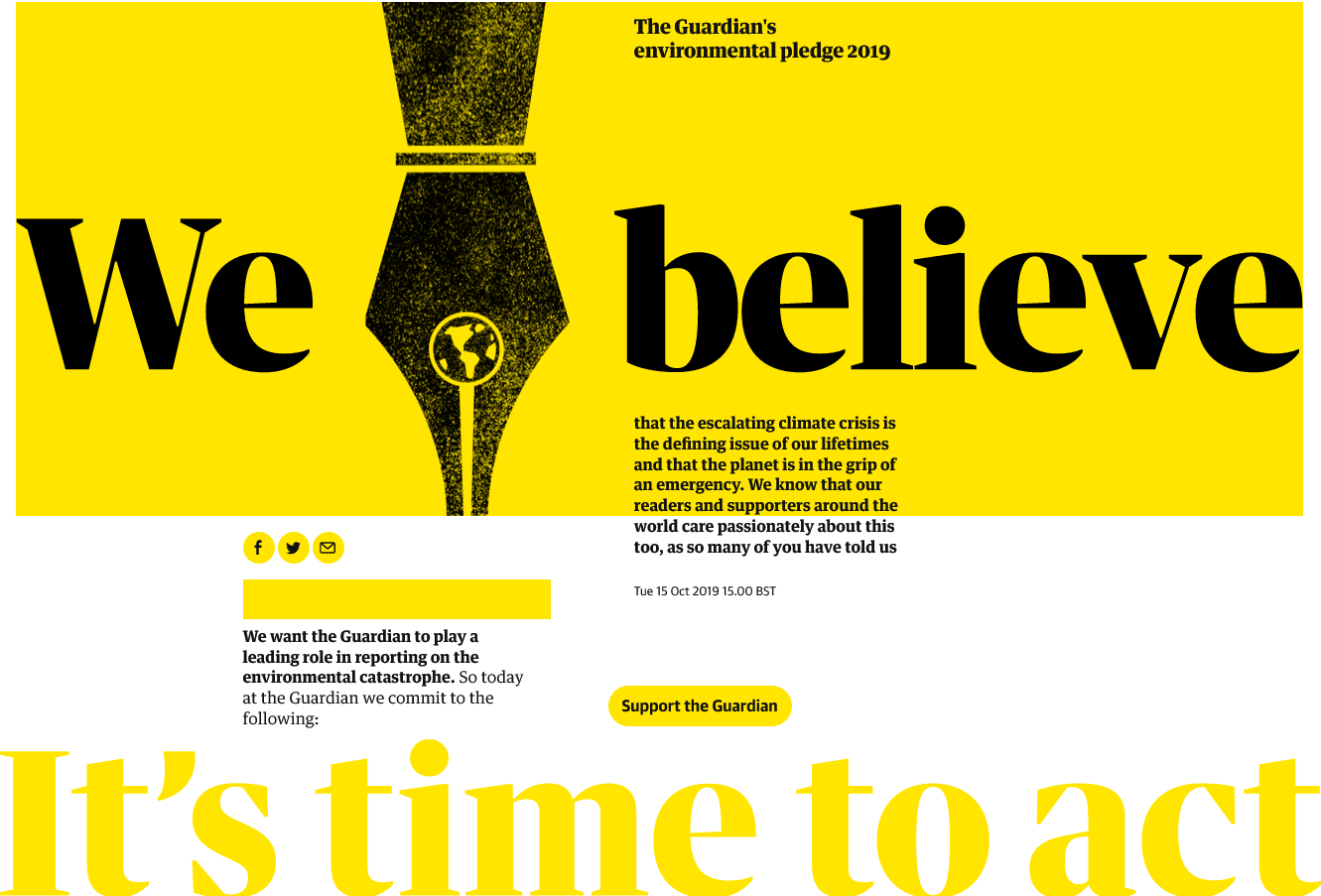
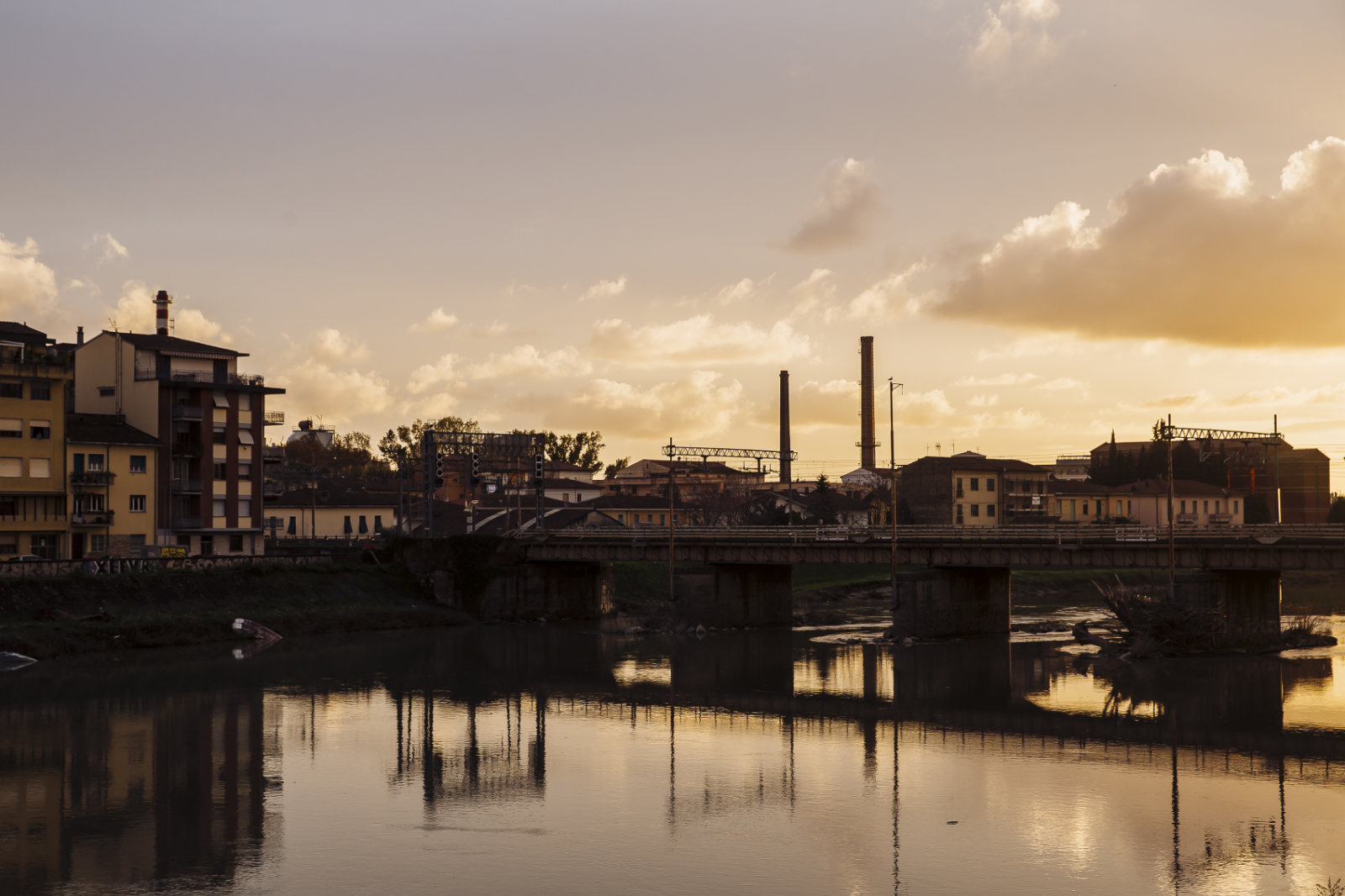
Perché dobbiamo cambiare le parole con cui parliamo d’acqua? Non sempre coincidono la percezione e la cognizione. Le esondazioni in Cina e in Bangladesh e gli incendi in California dell’estate 2020 assumono una dimensione di irrealtà, perché si tratta di tragedie che si consumano troppo lontano da noi. Ma in realtà non si tratta di semplici esondazioni e incendi, ma di catastrofi climatiche, disastri che diventeranno permanenti se l’acqua non diventerà priorità di progetto ed è il modo con il quale si comunica il tema acqua e tutti gli aspetti correlati che ne determina la comprensione e le azioni successive che vengono messe in atto a livello individuale e collettivo (fotografie di Stefano Anzini).
LE PAROLE (ESTREME) DELL’ACQUA #ATELIER(S)FEMIA JOURNAL #The Guardian #tempodacqua #thetimeofwater
Why do we need to change the words we use to talk about water? Perception and cognition do not always coincide. The recent floods in China and Bangladesh and the fires in California take on a dimension of unreality, because they are tragedies that are taking place too far from us. It is not a question of simple floods and fires, but of climatic disasters, disasters that will become permanent if water does not become a project priority. The way in which the theme of water and all related aspects is communicated determines its understanding and subsequent actions that are implemented at an individual and collective level.
At the end of last year (2019), after the Australian wildfires tragedy, the Guardian decided to change the term climate change. Objective: to make it clearer to everyone what it is. The different impact of expressions such as climate crisis or climate emergency or climate catastrophe with respect to climate change is evident. The great contribution that architecture can make to containing the effects of the climate and building a harmonious relationship with water is almost never communicated. Yet, it would be an object of interest for everyone, not just for professionals. Architecture is a great resource and water is a fundamental material for architecture, both in the visible interaction on the territory, both for the functional aspects of the plant, and for the invisible ones (water contained in natural materials, paints, pretty much everything you need to build).
Una foresta del 6000 a. C. sotto il mare — 6000 b.C. forest under the sea
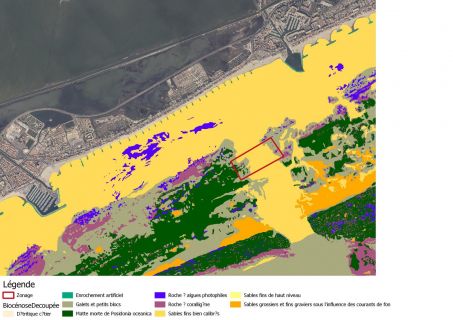
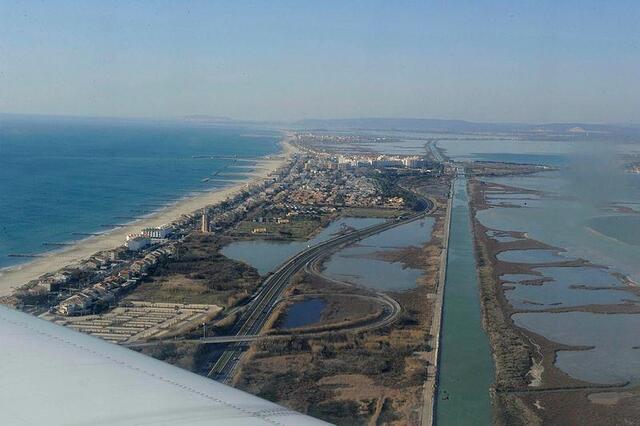
L’hanno scoperta gli scienziati del Centro di Ricerca archeologica subacquea della Linguadooca a circa un chilometro dalla costa di Palavas-les-Flots. È una foresta sommersa da 8000 anni. Ed è un bellissimo racconto in cui i protagonisti sono l’acqua e il tempo; non è legato al cambiamento climatico, ma è un’affascinante testimonianza dell’acqua come dimensione del tempo. La datazione al carbonio 14 è stata quindi utilizzata per stimare l’età della foresta: 6000 a.C. che, in effetti, coincide con il periodo in cui l’innalzamento del livello del mare è stato molto rapido. Esistono solo altre due altre foreste sottomarine nel mondo. La prima è stata scoperta al largo dell’Alabama (nel video), negli Stati Uniti, nel 2005, per effetto dell’uragano Katrina; la seconda, nel 2014, vicino al Galles. (Immagini tratte dal sito www.sciencesetavenir.fr)
FORESTA SOMMERSA IN FRANCIA #archeologiasubacquea #tempodacqua #thetimeofwater
Scientists from the Languedoc Underwater Archaeological Research Center discovered the forest about a kilometer from the coast of Palavas-les-Flots. It has been submerged for 8000 years. And it is a beautiful story whose protagonists are water and time; it is not linked to climate change, but it is a fascinating testimony of water as a dimension of time. Carbon 14 dating was then used to estimate the forest age: 6000 years B.C. which, in fact, coincides with the period when the sea level rise was very rapid. There are only two other underwater forests in the world. The first one was discovered off the coast of Alabama (see in the video), in the United States, in 2005, due to the effect of Hurricane Katrina; the second, in 2014, near Wales.
The carbon 14 dating carried out on these woody elements dated them to 6000 years B.C. The plants were identified as oaks by a xylological study. To date, only two other examples of drowned forests are known in the world. In Mobile, off the coast of Alabama (United States), revealed by Hurricane Katrina (in 2005) and dated 50,000 years ago; and in Wales, exposed by a storm, in 2014. These exceptional discoveries are direct indicators of the position of the palaeo-littoral as it was before the rise in sea level, during the Holocene, the geological period of the last 10,000 years. They constitute a proven marking of the localization of the coastline of the time.
Si stanno sciogliendo i ghiacciai delle Ande — Glaciers in the Andes are melting
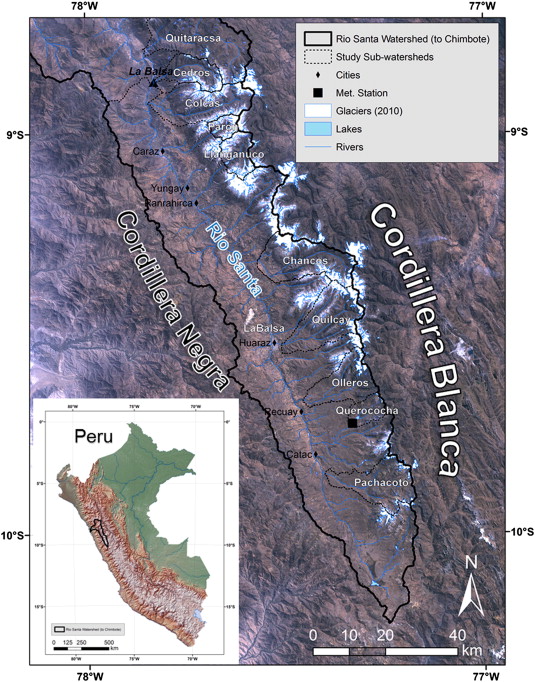
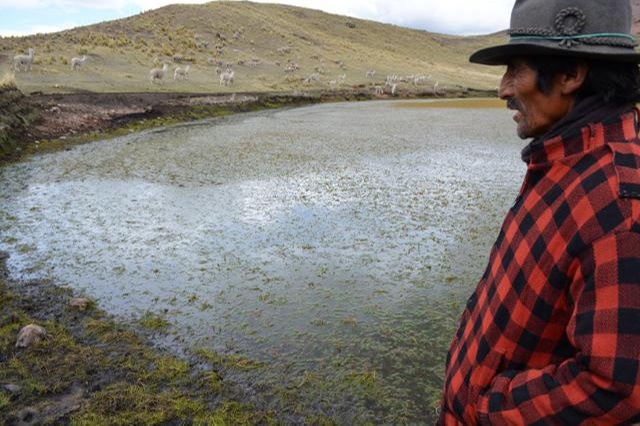
La superficie dei ghiacciai delle Ande si è ridotta del 25 per cento in poco più di vent’anni a causa del cambiamento climatico. Ne soffre l’agricoltura della Cordillera Blanca che nei mesi di siccità utilizza l’acqua dei ghiacciai per l’irrigazione e di conseguenza per le 250mila persone che abitano le montagne. Dopo l’insuccesso di un progetto idrico complesso, si sta provando a integrare le antiche dighe abbandonate sulla Cordillera Negra, dove non ci sono ghiacciai, con i sistemi idrici contemporanei. Le Ande sono la più grande catena montuosa nel mondo e provvedono al sostentamento di 160 milioni di persone in sette paesi.
GHIACCIAI NELLE ANDE studio di Patrick Burns e Anne W. Noline #tempodacqua #thetimeofwater
The surface of the Andes glaciers has shrunk by 25 percent in just over twenty years due to climate change. This is causing significant suffering for the agriculture of the Cordillera Blanca which in the months of drought used the water of the glaciers for irrigation and consequently for the 250 thousand people who live in the mountains. A very complex water supply project did not work. Now they are trying to integrate the ancient abandoned dams on the Cordillera Negra, where there are no glaciers, with contemporary water systems. The Andes are the largest mountain range in the world and provide for the livelihood of 160 million people in seven countries.
Over the past few decades there has been an increasing interest in building micro-dams across the whole of the Cordillera Negra, North-Central Andes, Peru. Given the difficulties in maintaining a regular flow of water, especially during the dry season, it is a logical response to a pressing need. Indigenous skill and landscape knowhow informed the selection of sites for damming. Modern engineers have followed their lead, such that present-day micro-dams often occupy the same space as the prehispanic ones. Aside from the obvious destruction of cultural heritage – usually without a proper archaeological survey – there is one other problem with this policy: not all the old dams which are now being reconstructed were built for retaining just water. For more information read here
Osservare l’acqua dallo spazio — Water Monitoring from Space
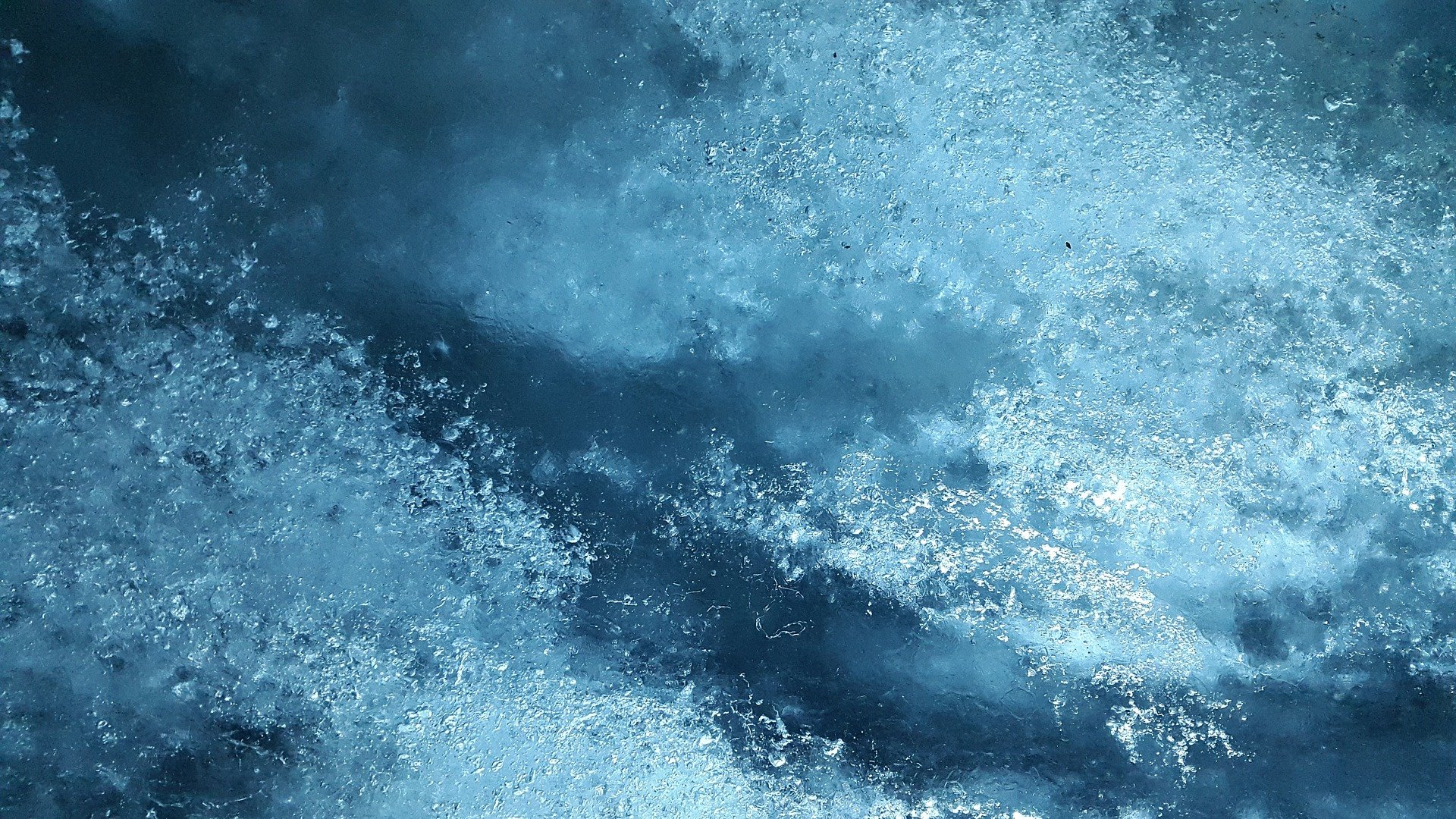
Si chiama WaMos Water Monitorin from Space e se ne occupa un’italiana, Elisa Fagiolini, che è CEO/CTO del progetto. In un’intervista concessa al centro di ricerca tedesco GFZ e ripresa da Perugia Today, Elisa ha spiegato che quando il ghiaccio sulla Groenlandia si scioglie, i ghiacciai perdono massa che scorre nel mare. Questo si può misurare dallo spazio, così come i serbatoi di acque sotterranee sotto la California sia quando stanno perdendo massa e anche quando il terreno è saturo d’acqua e quindi non può più assorbire la pioggia, aumentando il rischio di inondazioni. Con l’aiuto delle misurazioni dei campi gravitazionali, si possono prevedere sia la carenza d’acqua, sia le inondazioni.
WA.MO.S WATER MONITORING FROM SPACE Elisa Fagiolini #GZEHelmholtzCenterPotsdam #tempodacqua #thetimeofwater
It’s called Space’s WaMos Water Monitoring from Space. Elisa Fagiolini, who is CEO / CTO of the project, takes care of it. In an interview granted to the German research centre GFZ , also quoted in Perugia Today, Elisa explained when the ice on Greenland melts, the glaciers lose mass which flows in the sea. This can be measured from space. Another application is the measurement of groundwater reservoirs under California both when they are losing mass and when the ground is saturated with water and therefore can no longer absorb rain, increasing the risk of flooding. With the help of gravitational field measurements, both water shortages and floods can be predicted.
It’s used as measurements of gravity, i.e. gravimetry, to find out about the distribution of water on Earth. With the help of data from the satellite missions GRACE (2002 to 2017) and GRACE-Follow On (since mid-2018) we calculate maps of the Earth’s gravitational field every month. These maps not only depict continents and ocean basins with crusts of varying densities, but also the density and mass shifts in the Earth’s mantle as well as short-term changes in mass on and below the Earth’s surface.
Abbiamo bisogno di NEED? — Do we really need NEED?
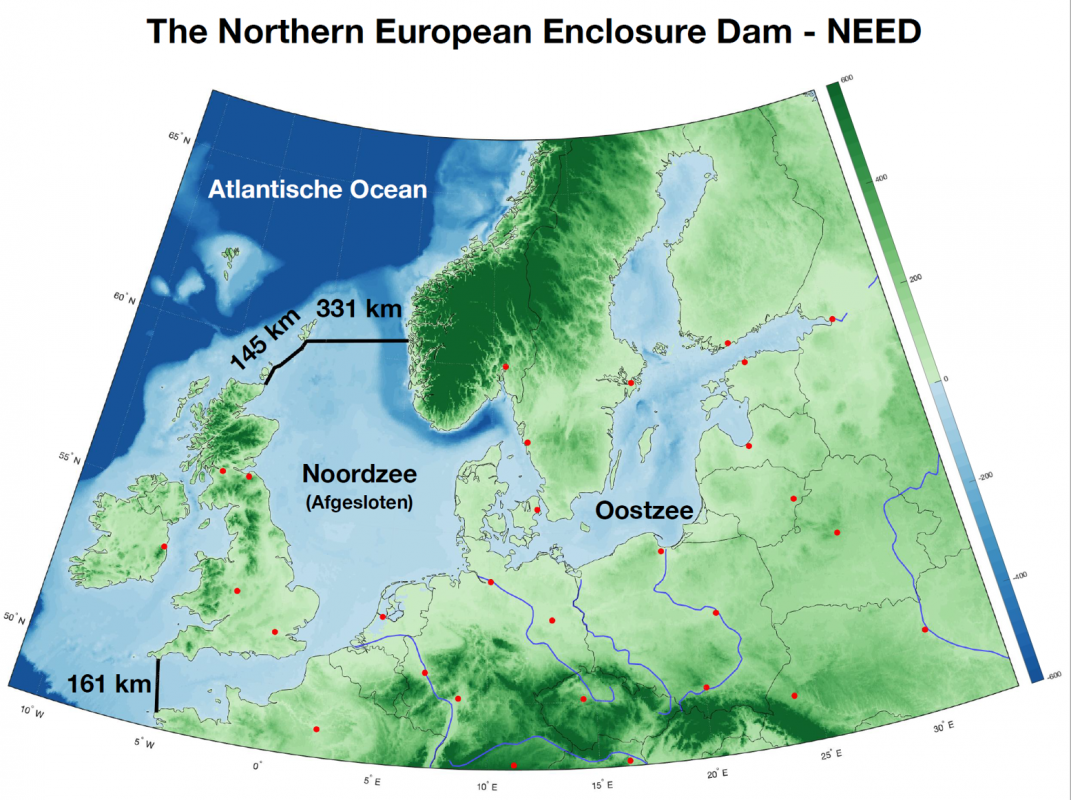
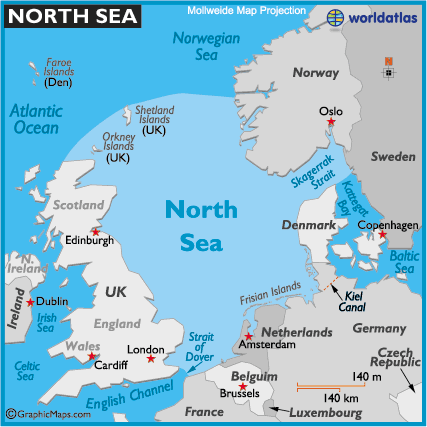
Se non si riesce a contenere il cambiamento climatico, si pensa di agire localmente. Sjoerd Groeskamp, un oceanografo del Royal Netherlands Institute for Sea Research, ha proposto di costruire due dighe per confinare il Mare del Nord e difendere l’Europa settentrionale dall’innalzamento del livello del mare, nel Canale della Manica tra Francia e Inghilterra e tra Scozia e Norvegia per 637 chilometri in totale. (leggi il documento originale di Groeskamp) Foto in alto The Indipendent.
NEED – NORTHERN EUROPEAN ENCLOSURE DAM #Sjoerd Groeskamp
If climate change cannot be contained, action is taken locally. Sjoerd Groeskamp, an oceanographer from the Royal Netherlands Institute for Sea Research, proposed building two dams to confine the North Sea and defend northern Europe from rising sea levels in the English Channel between France and England and between Scotland and Norway for a total of 637 kilometers. (see here and here)
The proposed NEED aims to construct two dams of a combined length of 637 km. The first between northern Scotland and western Norway (476 km) and the second between France and southwestern England (161 km). The project intends to separate the North and Baltic Seas from the Atlantic Ocean to protect Northern Europe against SLR. The project classifies the solutions to SLR into three categories namely, taking no action, protection, and managed retreat — and categorises NEED into the second category. NEED is expected to have the least direct impact on people’s daily lives and can be built at a reasonable cost. It can be implemented in other regions in the world including the Persian Gulf, the Mediterranean Sea, the Baltic Sea, the Irish Sea, and the Red Sea.
La diga tra Egitto ed Etiopia — The dam between Egypt and Ethiopia
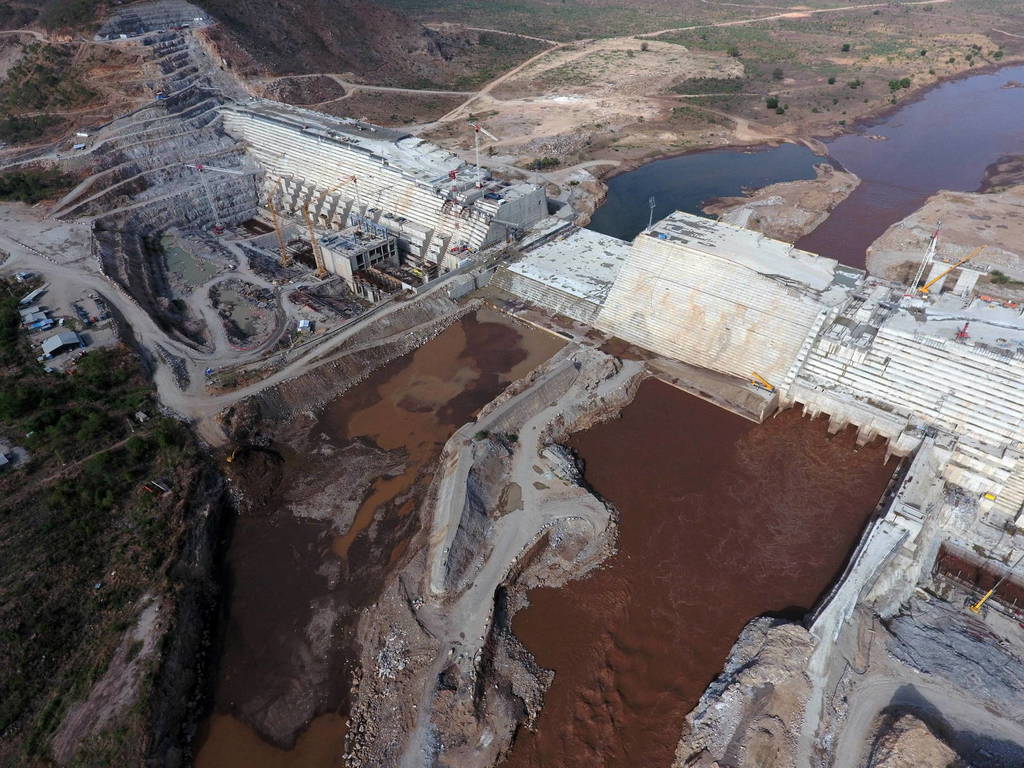
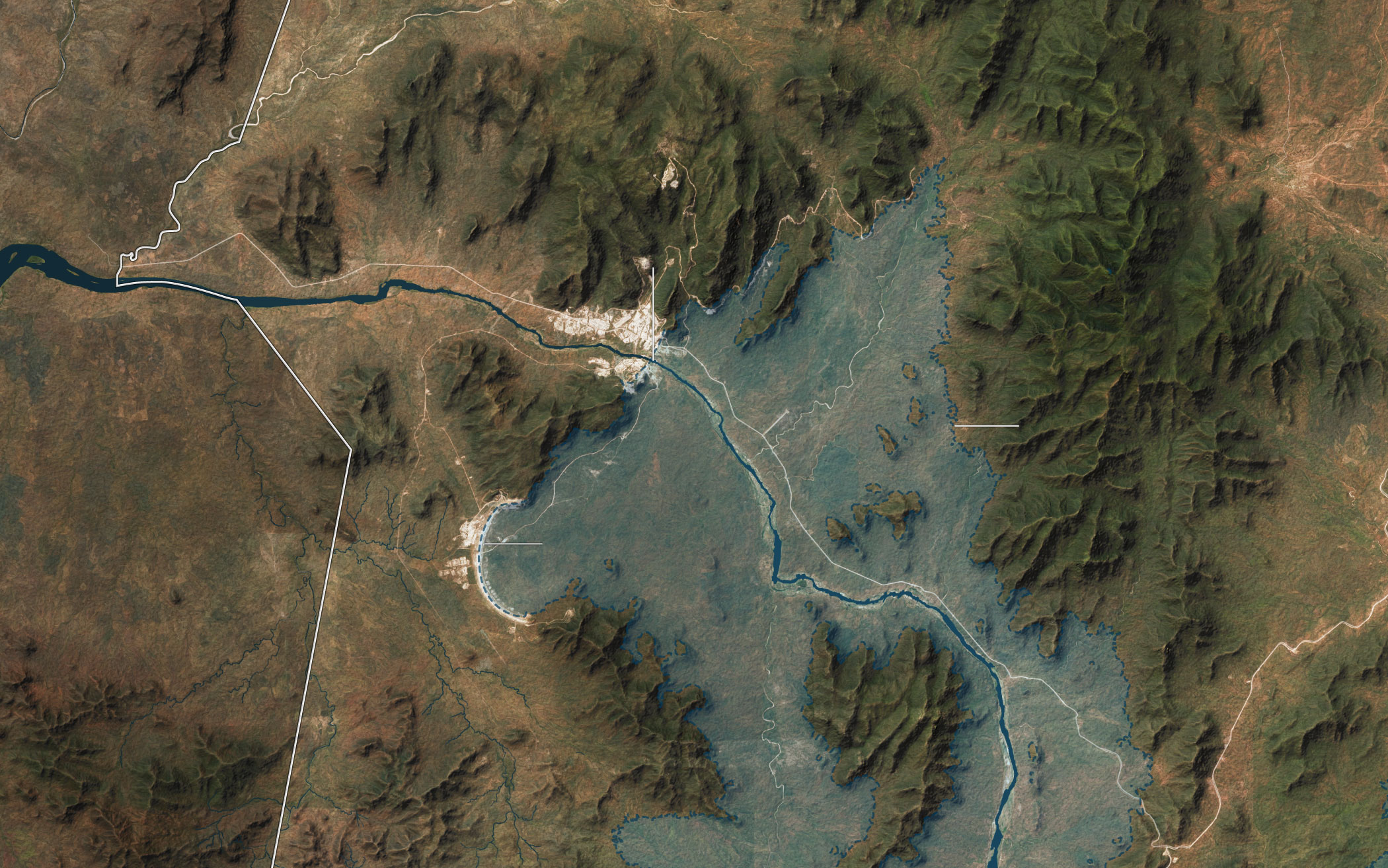
Quando si parla di dighe, si pensa all’Olanda. Ma le dighe sono motori per l’economia, ovunque ci sia acqua. E per l’acqua si litiga di più che per il petrolio così afferma l’Unesco, in un suo recente rapporto. In Etiopia sta per essere completata una diga idroelettrica sul fiume Nilo a più di 3000 metri di altezza. Nella prossima estate, si potrà cominciare a riempire il bacino. La diga è molto importante per l’economia etiope. Ma l’opera minaccia di ridurre ulteriormente l’approvvigionamento idrico dell’Egitto, paese desertico e per lo più abitato proprio sulle sponde del fiume.
GRAND RENAISSANCE DAM ON THE NILE Studio Pietrangeli, Salini Costruttori #progetto #costruzione #tempodacqua #thetimeofwater
When we talk about dams, we think of Holland. But dams are engines for the economy, wherever there is water. And for water there is more controversy than for oil, so says UNESCO in a recent report. In Ethiopia, a hydroelectric dam on the Nile river, more than 3000 meters high, is nearing completion. In the next summer, it will be possible to start filling the basin. The dam is very important for the Ethiopian economy. But the work threatens to further reduce the water supply of Egypt, a desert country and mostly inhabited right on the banks of the river.
The Grand Ethiopian Renaissance Dam project, currently under construction in Ethiopia, is located approximately 40 km downstream of the confluence with the River Beles at a narrow point about 15 km upstream of the Ethiopian border with Sudan. The main dam is a roller compacted concrete (RCC) gravity dam with a maximum height of 175 m and a length of about 2 km at crest elevation, reaching a total volume of about 10 million m3.
Calzature trasformabili per il cambiamento climatico — Footwear for climate change
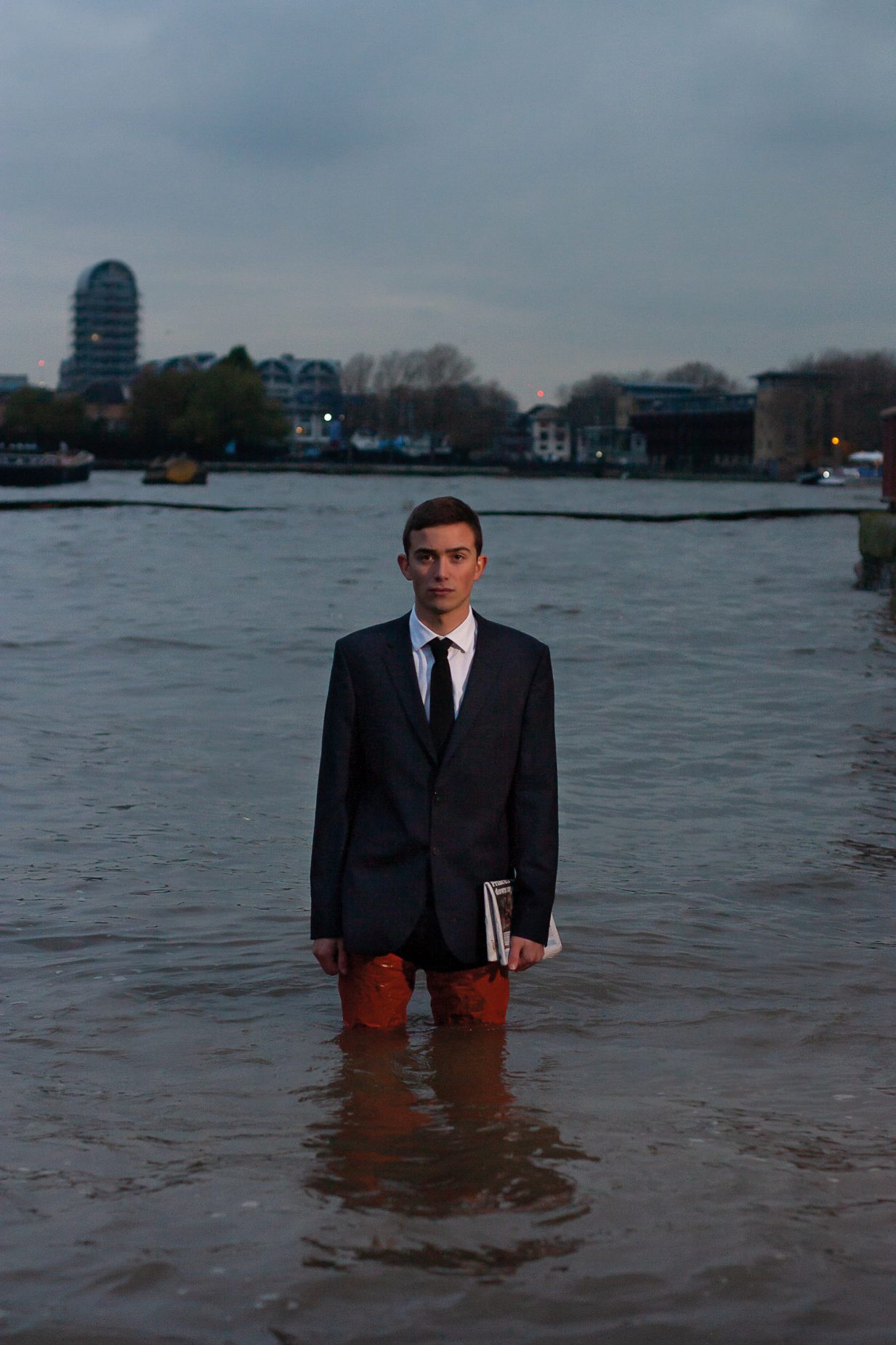
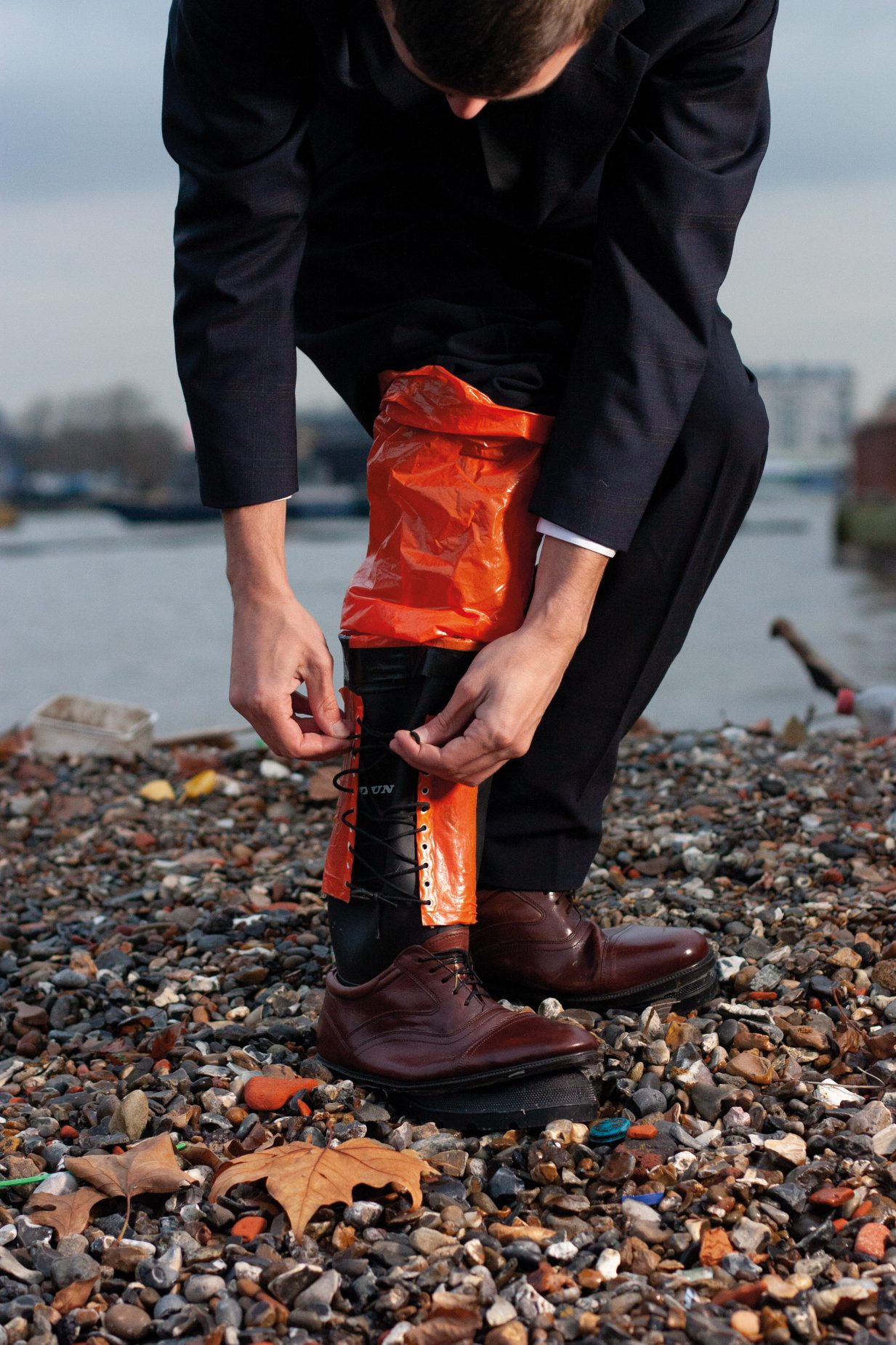
Nicholas Bennet, uno studente della Goldsmiths ha progettato delle calzature trasformabili waterproof che possono essere integrate nell’abito per proteggerlo dalle inondazioni che potrebbero diventare la nostra realtà quotidiana a causa del cambiamento climatico nel futuro, quando l’effetto dell’innalzamento dei mari diventerà talmente inevitabile che sarà necessario trovare soluzioni che si possano integrare negli oggetti d’uso quotidiano.
FLOOD-PROOF COMMUTER SUITS #NicholasBennet #tempodacqua #thetimeofwater
Goldsmiths student Nicholas Bennett has created waterproof footwear for commuters, that can be integrated into a suit to protect it from the floods that might become our daily reality due to climate change. The project imagines a future where the effects of rising sea-levels have become so inescapable, that solutions need to be integrated into our everyday products. In this case, that involves waterproofing office-appropriate brogues by merging them with wellies and adding fluorescent orange waders. These can be unfurled to groin height to keep the suit trousers dry or tucked away under their hem when not needed, with laces on the sides used to hide the shoes’ bulky form. The project is presented via a short film, in which a fictional corporate worker embarks on his daily commute, folding up his neatly ironed suit trousers and pulling the orange plastic over the top before wading through the knee-deep water.
Nicholas Bennett, a first year BA Design student at Goldsmiths, is the winner of the #CreateCOP25 competition launched by artist management agency Art Partner. The contest invited young creatives to submit artistic proposals that engage with contemporary issues around climate change.
Mente e acqua — Blue Mind
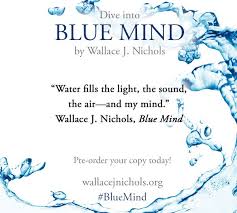
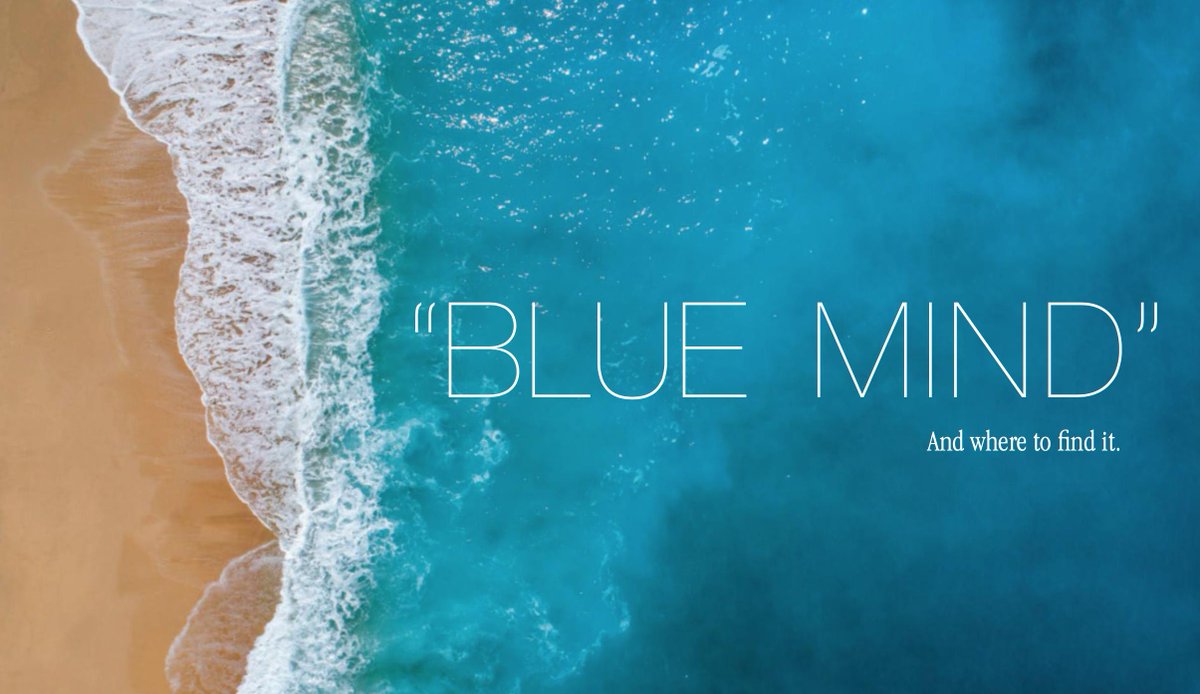
Lo sguardo sull’acqua -suono, odore, colore – ci induce ad assumere una default-mode che gli scienziati ipotizzano permetta al cervello di consolidare le esperienze e di prepararsi quindi a reagire agli stimoli ambientali. Questa funzione interagisce con l’ippocampo, parte essenziale allo sviluppo neuroplastico del cervello, che aiuta a creare nuovi ricordi e nuovo apprendimento. Questo è quanto afferma Wallace J. Nichols nel libro Blue Mind (state of mind) (Immagine di Borna Bevanfa on unsplash).
BLUE MIND, Wallace J. Nichols #bluemind #wallacejnichols #tempodacqua #thetimeofwater
Blue Mind is a landmark book by marine biologist Wallace J. Nichols on the remarkable effects of water on our health and well-being. Nichols revolutionizes how we think about these questions, revealing the remarkable truth about the benefits of being in, on, under, or simply near water. Combining cutting-edge neuroscience with compelling personal stories from top athletes, leading scientists, military veterans, and gifted artists, he shows how proximity to water can improve performance, increase calm, diminish anxiety, and increase professional success.
Wallace “J.” Nichols is a scientist, wild water advocate, movement-maker, and author of the New York Times best seller book – Blue Mind: The Surprising Science That Shows How Being Near, In, On, or Under Water Can Make You Happier, Healthier, More Connected, and Better at What You Do. He takes a slow, collaborative approach with leaders in businesses, government, non-profits, and academia to inspire a deeper connection with nature and inventive solutions to pressing issues. His research and expeditions have taken him to coasts and waterways across North, Central and South America, to Asia, Africa, Australia, and Europe where he continually finds that the emotional connection to waters of all kinds–rather than force of financial gain–is what keeps his colleagues and collaborators working hard to understand and restore our blue planet.
Tempo d’acqua sulla luna — The time of water on the moon
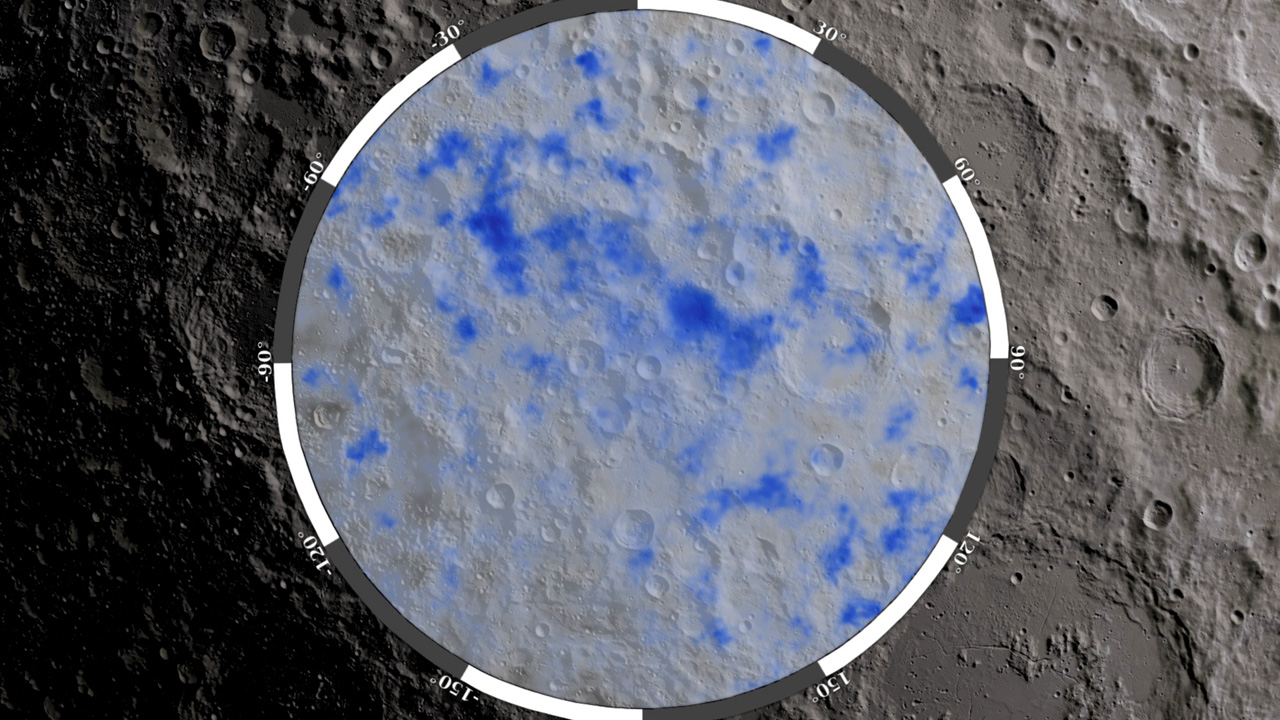

Che sulla Luna ci sia l’acqua si sa da dieci anni. Nel 2009, la sonda spaziale LCross (Lunar CRater Observation and Sensing Satellite) della NASA rilevò la presenza di acqua – sotto forma di ghiaccio – nel Polo Sud della Luna. O meglio il razzo che spingeva la sonda LCross, nell’impatto con il polo Sud della Luna, mosse detriti nei quali la sonda riuscì a individuare acqua in grani di ghiaccio. Recenti studi autorizzano a immaginare, oggi, che possa esserci una grande quantità di ghiaccio nella parte sempre in ombra del satellite. Non si tratterebbe di ghiaccio come quello terrestre, sarebbe necessario un raffinato sistema di depurazione per estrarre l’acqua mescolata ad altri elementi. (da Il post)
WATER ON THE MOON, Nasa #Nasa ##tempodacqua #thetimeofwater
A team of researchers at the University of California says that there could be way more ice water on the surface of the Moon than previously believed — and that could be a huge deal for future missions to the Moon. The researchers with this new effort believed it was likely that there was more ice on the moon than was shown during the LCROSS impact study—likely existing in shadowed craters similar to those that had been seen on Mercury (phys.org).
To find out water, the researchers carried out a parallel crater study, similar to the one they had conducted for Mercury. In this case, they studied 12,000 craters on the moon using data from the LRO. They report that they found “a similar morphological trend” in craters on the south side of the Moon, near the pole. They suggest this indicates that such craters likely harbor thick ice deposits along with other materials similar to those that are believed to exist on Mercury. The researchers suggest that if this is indeed the case, then there could be up to 100 million metric tons of ice in such craters, which they note is double the amount of previous estimates based on data from the LCROSS impact study. The researchers conclude by suggesting that future Moon missions include the use of probes that can be used to study the shaded craters to confirm their suspicions.
Acqua urbana — Ground water
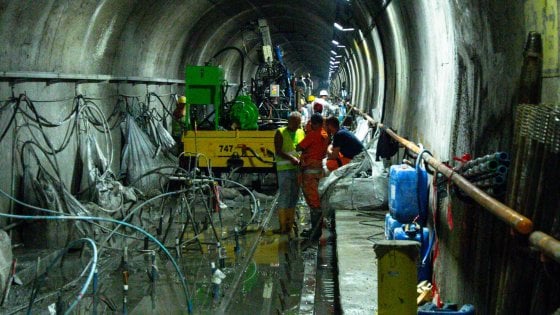
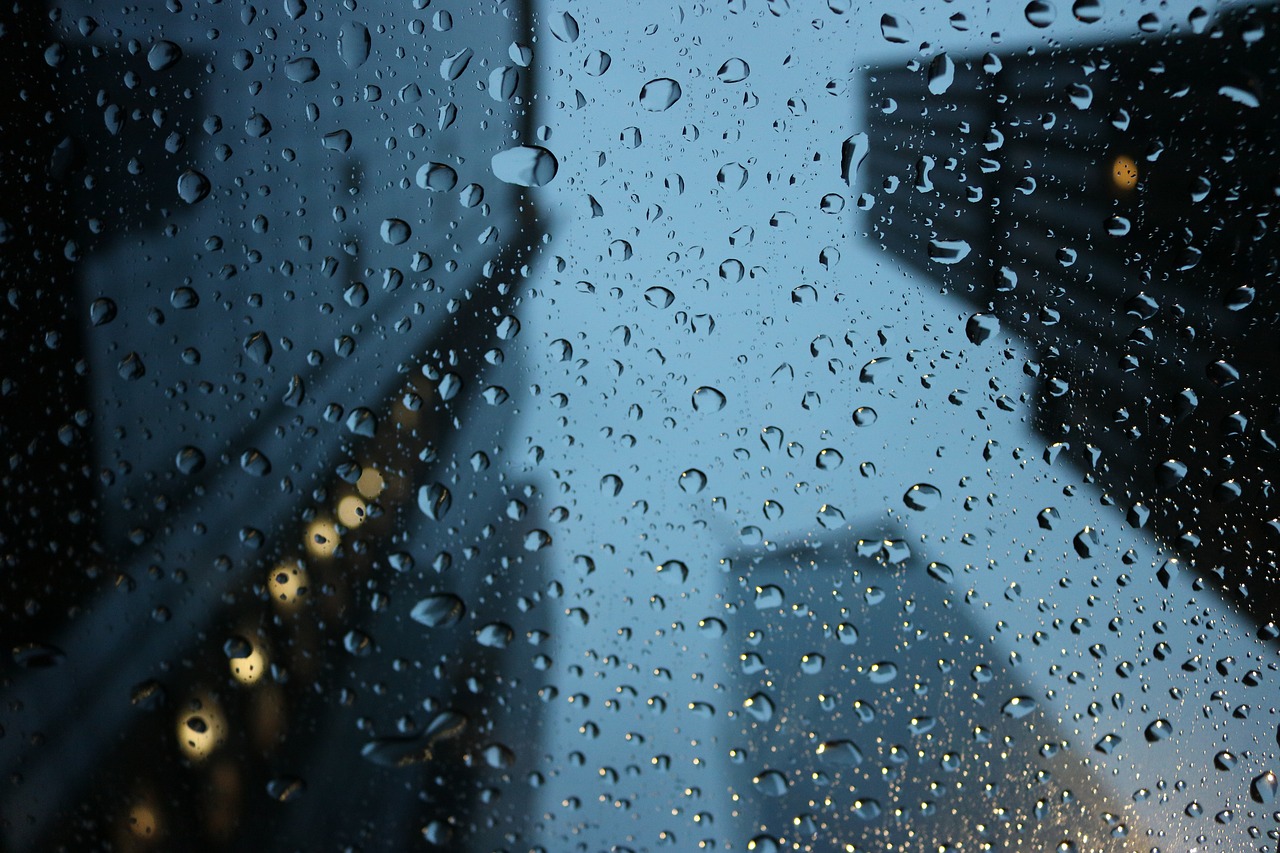
Le acque di Milano sono le protagoniste del libro di Michele Serra “Sull’acqua”, edito da Aboca nel 2018. Lo sviluppo industriale, la fortuna dei grandi fondi agricoli lombardi sono legati alll’acqua. Dopo decenni di prelievo forzato industriale, le acque di Milano giacciono nel sottosuolo della città. Il racconto prende spunto dall’attività industriale delle Acciaierie e Ferriere Lombarde Falck a Sesto San Giovanni, che si alimentavano dalla falda acquifera della Pianura Padana, “l’anima rigurgitante dell’economia lombarda” (articolo in askanews)
SULL’ACQUA, Michele Serra #sullacqua #micheleserra #tempodacqua #thetimeofwater
The book “Sull’acqua”, written by Michele Serra, is a text at once poetic and philosophical on the universal and critical theme of water, the essential element in the life of individuals and of societies, now under the real, keen threat of environmental pollution, that has been able to build dispersion and voracious economic interests.
Michele Serra writes: “The idea of something coming from below is no less fascinating than something looming from above; if the ancients were afraid that the sky would fall, I imagined an event for us moderns in which the water comes up from the depths to remind us of our weaknesses as well as our duties […] It goes without saying that this isn’t just a poetic musing. Climate change reflected in water levels […] is one of the great future problems for humanity, and water consumption is a clear urgent need […] That which emerges from below contains a revelation, something that we had forgotten, neglected […] Sull’acqua is also an unspoken prayer: may we never be without water, and may its level remain high enough for our survival, neither above that nor below.”
Frangiflutti intelligenti — Smart breakwater
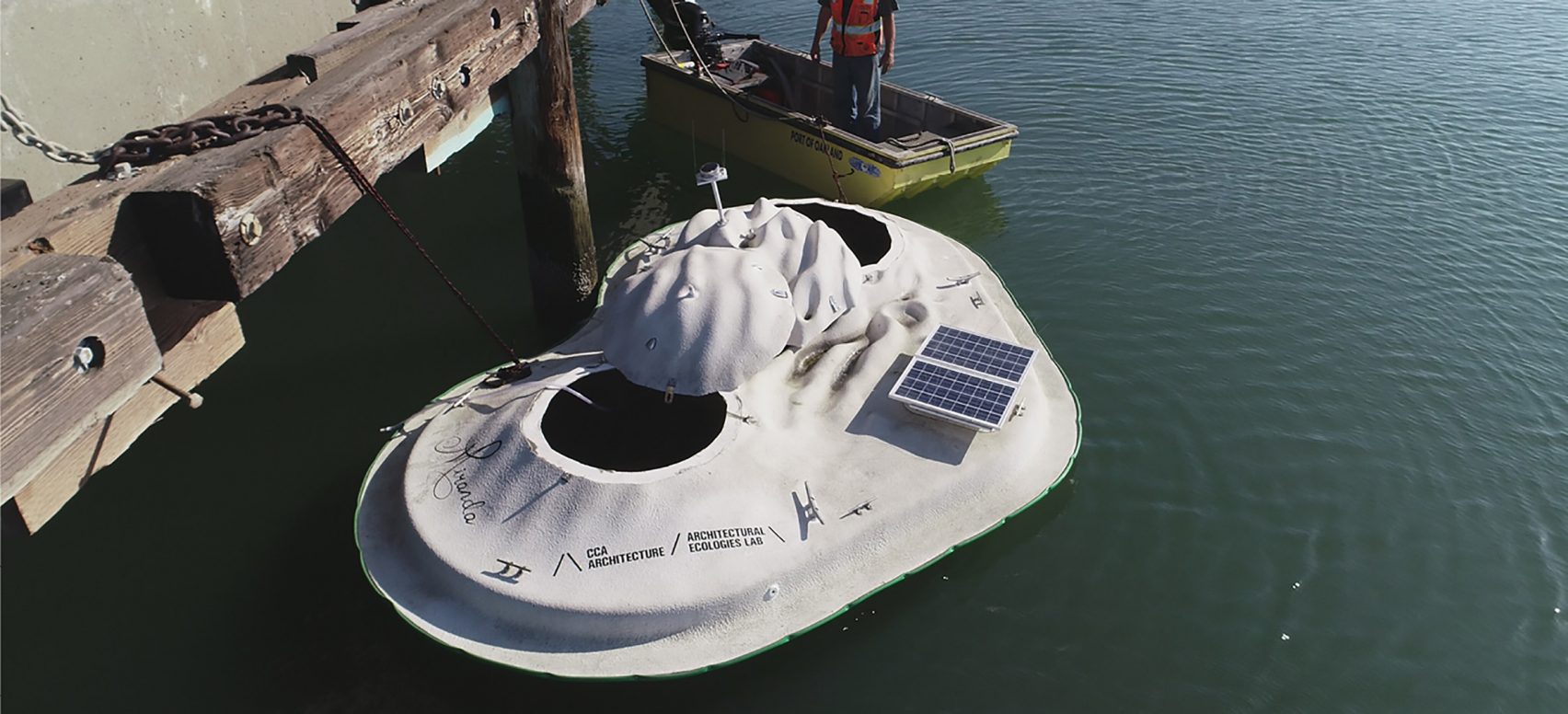
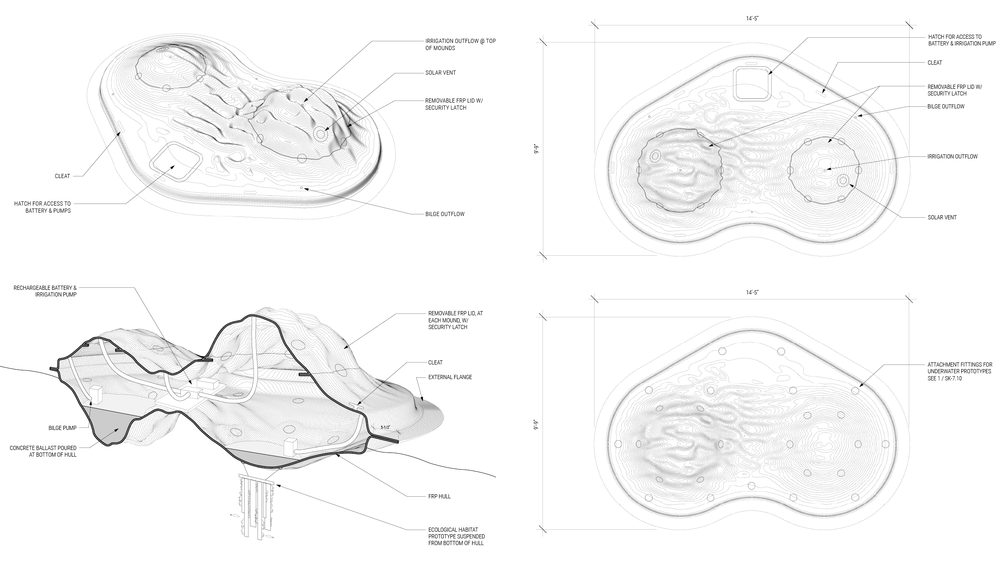
Si chiama Float Lab ed è una piattaforma galleggiante ormeggiata nel Middle Harbor Shoreline Park di Oakland, progettata dal California College of Arts. Funziona come frangiflutti e la sua forma è stata pensata per soddisfare le diverse esigenze dell’habitat marino, per spugne, nudibranchi, crostacei, ostriche, cozze e ricci di mare. La parte superiore ha picchi e vallate, per la formazione di pozze di marea. La parte inferiore ha topografie diverse i diversi tipi di invertebrati (da un articolo in deezen.com).
FLOAT LAB, California College of Arts #deezen #ArtsArchitecturalEcologieslab
The Float Lab will test solutions for enhancing marine habitat and alleviating coastal erosion. The substrate is designed to create a range of scales of habitats for marine invertebrates, creating small pockets of space that protect smaller creatures from predators and this strengthens the food chain and increases biodiversity.In large masses, this biological growth can help attenuate wave action and reduce coastal erosion – one of the primary impacts of climate change and sea-level rise
Float Lab, formally called the Buoyant Ecologies Float Lab –moored in Oakland’s Middle Harbor Shoreline Park, is a structure serving as both a research platform and demonstration project. The structure was created by a team of artists, designers and architects from the California College of the Arts (CCA). The floating structure acts as a breakwater that helps block waves and make the water calmer. The Float Lab, a cutting-edge prototype for an ecologically productive floating breakwater, merges expertise from design, advanced digital manufacturing and marine ecology to imagine a new kind of architecture for climate adaptation.
Oceani acidi — Acidic oceans
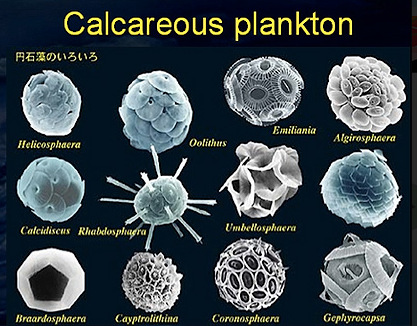
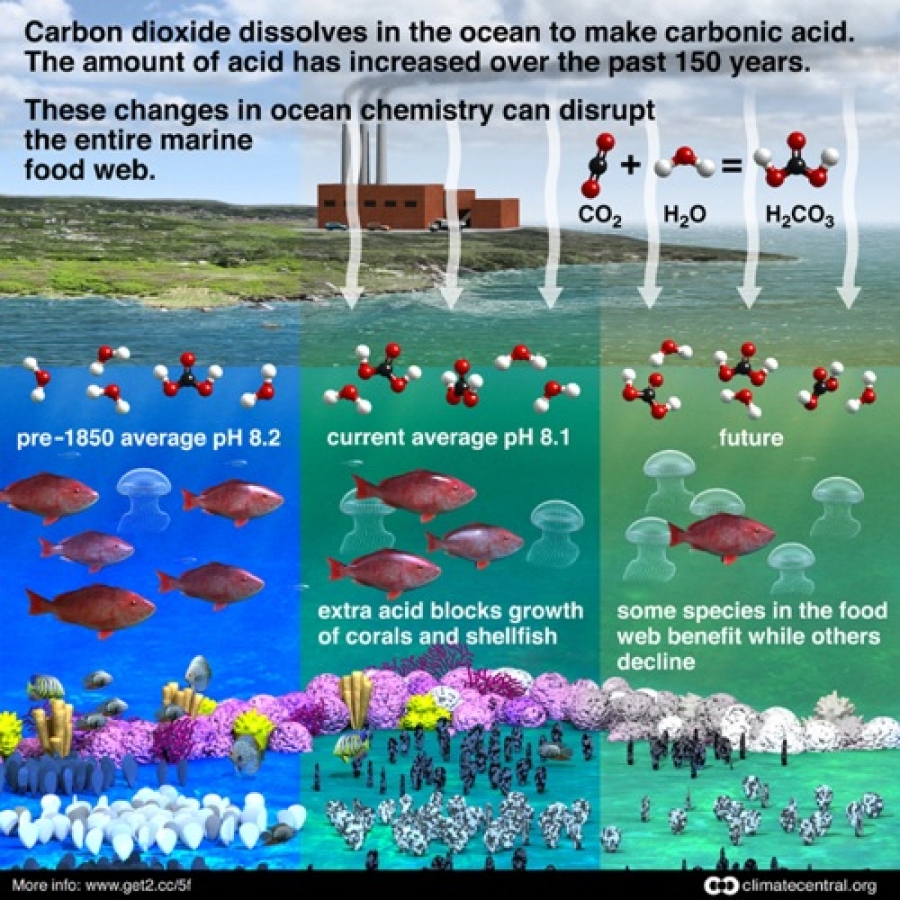
Gli oceani ci aiutano a ridurre la CO2 che resta in atmosfera in seguito alle nostre emissioni: ne assorbono più di un quarto. Ma in questo processo il pH si abbassa e gli organismi marini con guscio calcareo ne soffrono. La maggior parte del plancton ad esempio che è alla base di tutta la catena alimentare in mare. La rivista internazionale Nature Climate Change ha, di recente, pubblicato uno studio sugli effetti dell’assorbimento della CO2 negli strati più profondi dell’oceano, scegliendo come campione il mar del Giappone per le caratteristiche assimilabili a quelle di un piccolo oceano, rivelando che l’acidificazione è arrivata anche negli strati più profondi (dal blog di Le Scienze, edizione italiana di Scientific America, articolo di Antonello Pasini. Img sopra da The Economist).
ACIDIC OCEAN, Nature Climate Change #natureclimatechange #lescienze #theeconomist #tempodacqua #thetimeofwater
Also “The Economist” re launches the news: the world’s oceans are getting warmer, stormier and more acidic. They are becoming less productive as the ecosystems within them collapse. Melting glaciers and ice sheets are causing sea levels to rise, increasing the risk of inundation and devastation to hundreds of millions of people living in coastal areas. (immagine da climatesentral.org)
On September 25, 2019, the IPCC will release its Special Report on the Ocean and Cryosphere in a Changing Climate. The Intergovernmental Panel on Climate Change (IPCC) has released the Special Report on the Ocean and Cryosphere in a Changing Climate. More than 100 leading scientists from 36+ countries prepared the report, citing nearly 7,000 research publications. Here’s what to look for: the latest science on how climate change affects the ocean, coastal, polar and mountain regions—as well as the communities that depend on them; a focused chapter on sea level rise and its ramifications for low-lying islands; a look at climate extremes and “abrupt changes”, including tropical storms and the jet stream; options for risk management, adaptation, and sustainable development.
b
Alla Biennale di Architettura di Pisa, la mostra-Pangea, il continente diventato Isola, traccera l’Atlante delle mutazioni del “tempodacqua” attraverso l’arte, l’architettura, la fotografia.
L’apertura totale, l’assenza di limite concettuale caratterizza la manifestazione pisana che vuole porsi come luogo di dibattito, dove le esperienze si incontrano per dare vita a una piattaforma che genera significati nuovi e per attribuire all’architettura un ruolo essenziale nella valorizzazione, nell’esaltazione o nella mitigazione, quando sia necessario, dell’evoluzione storica dell’Acqua.
Per questo la Biennale e il suo direttore, Alfonso Femia, hanno scelto di aprire il confronto con personaggi autorevoli per indagare l’architettura d’Acqua su diversi livelli di complessità.
Ai momenti di confronto in calendario si aggiungano i preziosi contributi, attraverso le videointerviste di 500x100Talk, di:
LUISA BADIA
STEFANO BOERI
ANDREA BOSCHETTI
TINA DASSAULT
DIDIER FIUZA FAUSTINO
FREDERIC CHARTIER, PASCALE DALIX
ICO MIGLIORE
GIOVANNI MULTARI
MARIO PATERNOSTRO
MARC PIETRI
RUDY RICCIOTTI
JACQUES ROUGERIE
CLEMENT WILLEMIN, VERDIANA SPICCIARELLI


